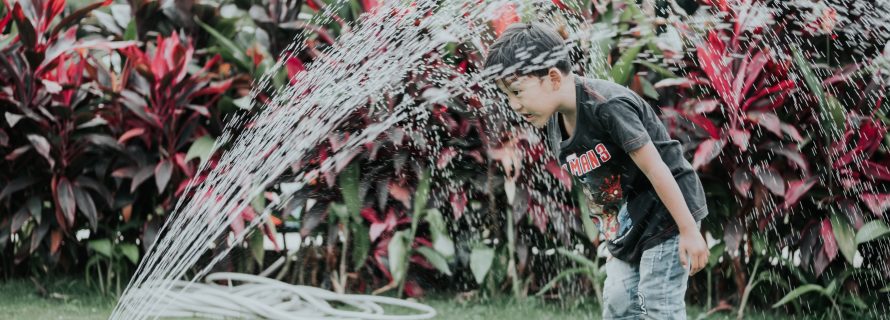Employing Methods of DIY Irrigation To Your Garden And Other Plants

Effective watering is the key to any successful gardening. Sure, it might be relaxing to wield a watering can on a sunny day out back, but it isn’t the most efficient and thorough way to make sure your plants are hydrated. Irrigation is an ancient, time honored way to make sure plants and crops get the water they need, and it isn’t reserved for professionals. With a little know how, DIY irrigation can be implemented in your garden, saving time, energy, and of course, water. Here are some methods you can try.
The basics
Before setting up an irrigation system in your garden it is wise to prepare. Moisture retention and runoff are key parts of irrigation, so make sure you mulch effectively. Mulching is often done with compost, but if you have trees around, fallen leaves can be just as effective once broken down. Remember also, there is no hard and fast formula you can apply when irrigating as different plants have different water needs. Better to keep an eye on the weather, the season, the type of plants and crops you are watering, and the soil. You’ll be watering the roots, not the leaves, to minimize waste and stop the spread of disease.
Hoses
You can use an ordinary garden hose to irrigate your plants, but it is easy to overdo it. A good way to save water waste is to use a butterfly valve to regulate flow, and a spray nozzle for more effective watering. Soaker hoses are affordable and effective. They are usually made of old tires with tiny holes bored into them, which gradually let water seep out into the roots. More efficient than regular garden hoses, and simple to install, they can be attached to your faucet and coiled around the back yard.
Sprinklers
A sprinkler is good for watering your lawn, though it can be a wasteful method, and sprinklers are often banned in areas that experience a hotter climate. However, it is possible to irrigate your garden using a sprinkler, although it is much more effective if you have a radius control and a timer. Other advanced features include oscillation and pulsation. Below ground sprinklers are available, and although they require a more intricate installation, they are more effective and less aesthetically intrusive. Rather than run off a faucet they use an underground piping system.
Drip irrigation
One of the more efficient ways of getting water into your garden, drip irrigation is becoming increasingly popular among amateur gardeners. A drip irrigation system relies on a series of pipes running underground, each supplying a different area of the garden, or different plants, with water. Each area of piping has emitters which regulate how much water passes into the roots of the plants. Easier than ever before to design, install and manage, drip irrigation is much less wasteful than almost all other garden irrigations methods, and allows for precision watering without expending any time or energy (apart from the initial set up, of course).
Ollas
One of the oldest methods of irrigation (at least 4,000 years old), ollas are clay vessels which are filled with water and buried underground. These serve as an underground water reservoir, and via osmosis, the water gradually emerges from the porous clay. Ollas provide what is known as deep watering – they keep the soil moist deep down. If you find that your olla empties quickly it is an indication that your soil is generally too dry. Depending on the size of the olla they can water the soil for remarkable distances.
Rainwater
Many gardeners collect rainwater in a butte. But if you live in an area that has regular rain throughout the year, it might be worth investigating the possibility of attaching a pump to your rain barrels. This can feed your irrigation system, be it a hosepipe or sprinkler, or to refill ollas. Remember though, rainwater can contain bacteria, and your rain barrels or tanks should be kept clean to avoid getting gunky or attracting mosquitos. Also remember – don’t use rainwater on your edible crops if you’re using a hose or sprinkler!
Irrigating your garden needn’t be complicated or expensive. And you will reap the rewards, reduce waste, and keep your garden perfectly watered.
About The Author: Tanya is a mother and a wife. In her spare time she loves to read books and ride bikes with her family.
Photo by Ali Yahya on Unsplash
- Additions and New Construction
- All Exteriors
- Alterations
- Basements
- Bathrooms
- Customer Service
- Customer Stories
- Decks
- Design & Planning Show
- DIY
- Doors
- Educational Resources
- Extreme Makeover Home Edition
- Fashion Show
- General Remodeling
- Green Living
- Handyman Home Services
- Home Decor
- Home Entertainment
- Home Improvement
- Home Improvements
- How to Tips
- In The Community
- Kitchens
- Off-the-Wall Remodeling Stories
- Remodeling
- Resources
- Roofing
- Siding
- Social Media
- Sunrooms
- Tips & Tricks
- Trends
- Windows

